Weatherspread Launched
June 2025 Monthly Digest

Bee (WA, USA)
Dear all,
Hello again! It’s been quite a few months. Welcome to you, new subscribers, and thanks to you, the faithful, for sticking around. I’m Max — indie developer, AI researcher, mediocre essayist and photographer, seeker and failure-to-finder of pithy tagline.
Apologies in advance for the length. This digest covers four months.
Weatherspread Is Out
In collaboration with two friends Shelby and Tristan, I launched a new (free) web app! It’s called Weatherspread (https://weatherspread.com), and it aims to help you plan travel and events far enough in advance that there’s no reliable forecast. It visualizes recent historical weather and tourism data.
Unmute to enjoy me whispering into my cheap microphone over royalty-free lofi beats.
Here are some screenshots from the app:

Left: the map and country attraction list. Center: a location’s weather card. Right: a customized, multi-year view for a selected time span.
Please give it a try at https://weatherspread.com. It works on desktop, phone, tablet, and everything in-between.
We’d love to get your feedback. There’s a link to a feedback form on Weatherspread itself, but it’s a bit buried (we’re working on it), so please also feel free to reply to me directly.
One piece of accidental feedback I’ve consistently gotten is, “I can’t find it on the app store!” This has made me realize that most people don’t think of rich web applications as “apps,” and calling it a “web app” doesn’t help the confusion. Maybe the answers are (1) just call it a website, (2) release an app version too, (3) both? (If this was you, don’t be embarrassed, many people asked!)
Posts
Three more PhD Metagame posts have been published since I last wrote to you in February.
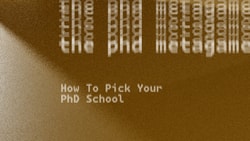
The PhD Metagame
How to Pick Your PhD School
Should you choose where to do your PhD based on how well you jive with your advisor, or based on the school's prestige?
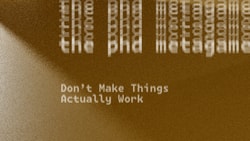
The PhD Metagame
Don't Make Things Actually Work
Not yet. It's a trap!

The PhD Metagame
How to Get Your Paper Accepted
Page 1 Accepts, the Rest Avoids Rejection
Two funny experiences with the above posts:
Someone posted the Don’t Make Things Actually Work essay on Hacker News (website for tech nerds), where it made the front page. The comments then filled with people arguing about it. I have a blanket policy of not arguing with people online, but even if I didn’t, I wouldn’t have needed to, such was the mass and fervor of people showing up on both sides to throw punches. It was delightful.
The second experience was that I initially wrote How to Get Your Paper Accepted in tweet form. (This got more attention than usual because, well, duh, everyone wants their stuff accepted. Then I spent another, I don’t know, thirty-ish hours working on the blog post. I published it. Barely anybody noticed.) But what shocked me was that writing the tweet version first improved the essay itself. Writing tweets forced me to build a high-level organization and concise takeaways upfront. And, in fact—and this is something I’m not prepared to truly admit to myself—the tweet version might actually be better. The essay has more structure, a new conceptual framework, and more ideas. But do you always need all that?
New Mailing List
I’m trying out a new backend for the newsletter — beaming this email directly to you from my own domain. Boy howdy the pipeline was more complicated than I expected. (For the technical: markdown → Python → Jinja template → React → HTML, plus an alternate path to generate the corresponding webpage from the same source.)
If this email didn’t go to spam, and you opened it and are reading these words, I’m thrilled.
Games: Titanic, Linguistics, Flight, Blueprints
In February, I played the unsettling and mildly fascinating point-and-click Titanic: Adventure Out of Time (1996, PC). It’s full of clunky, steampunk UIs modeled after physical objects (remember those days?), a facial animation system that might be the reigning worldwide uncanny valley champion, and an intricate do-this-before-that plot and event system that stressed me out to the point I just watched the last half on YouTube.
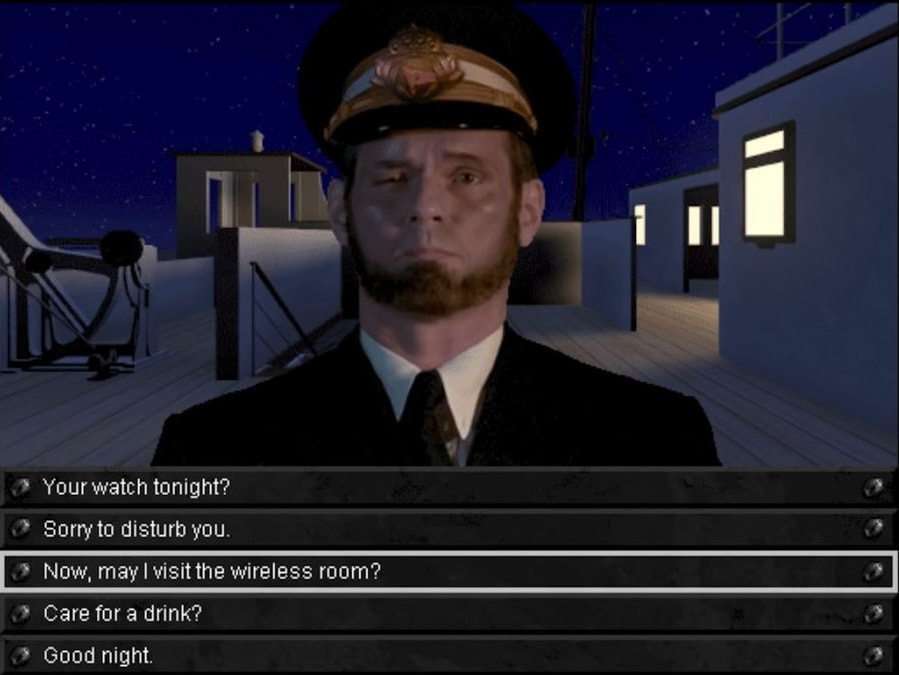
Titanic. You really have to see the faces animated to appreciate its '90s brilliance and horror. Imagine sub-components of the face being swapped out with different pieces, almost like a bad claymation done with paper.
In March, I played the beautiful and flawed and absolutely worth playing Chants of Sennaar (2023, Switch). It’s a cell-shaded linguistics adventure, where the gameplay is decoding and translating between different writing systems created by multiple imaginary cultures with a shared mythology. A gorgeous and tremendous achievement by just two developers. It rekindled my love of linguistics, reminded me how little a part it (linguistics) played in NLP when I started seriously working in the field in 2015, and how totally absent it is from the field now, ten years later.
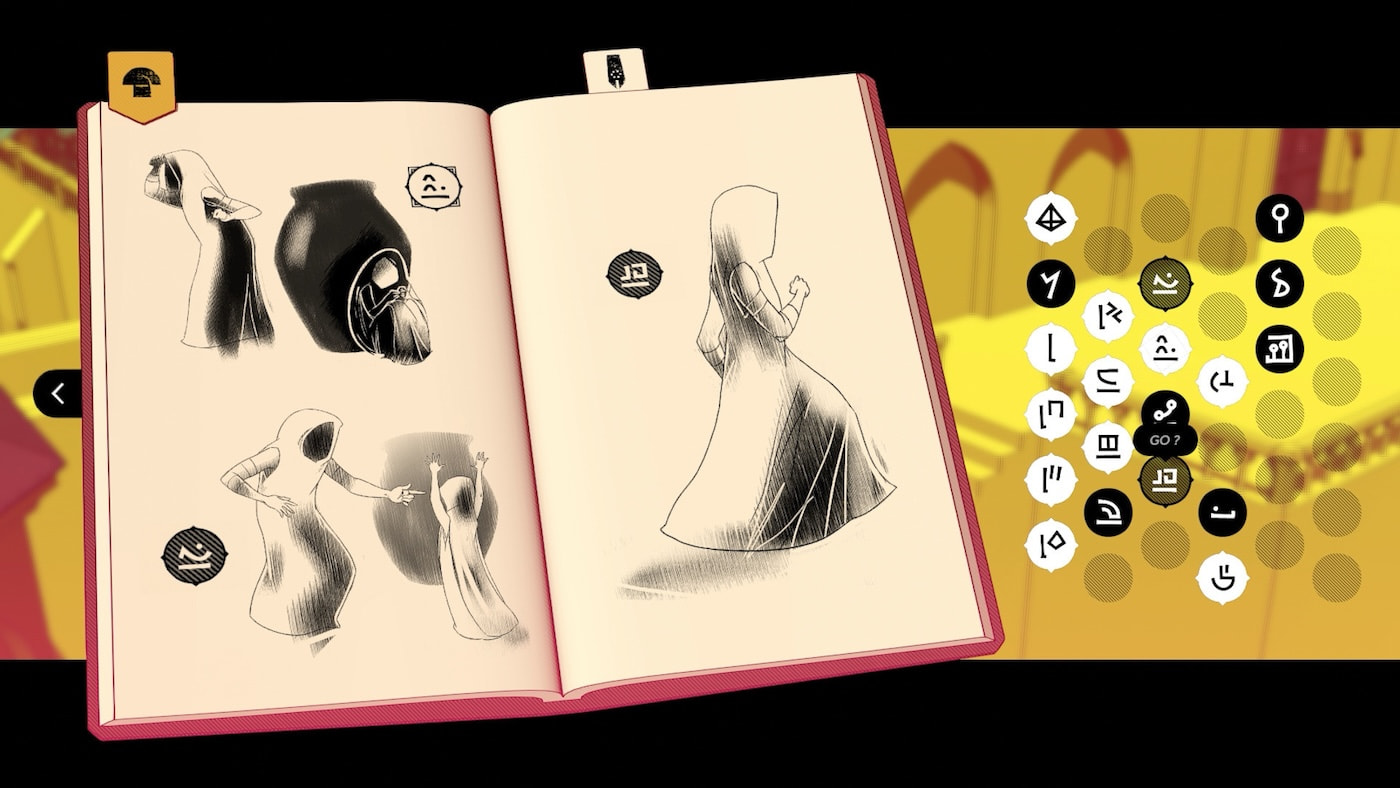
Chants of Sennaar. One of the scripts to decode. The mechanic where you write in your guess, then must match several simultaneously to lock in the translation, is brilliant and generally effective. It’s fun to see characters speaking with your own rough translations annotated alongside. I kept wondering while playing: are these really ‘languages?’ I’m suspicious, but not enough of a linguist to know.
In April, I played Ace Combat Zero: The Belkan War (2006, PS2 (emulated)). This was like attending a combat flight convention as someone with basically no interest in flying or combat. So, interesting as an anthropological study, because you can kind of reverse-engineer the stuff flight nerds like based on what the game shows and talk about. (It’s totally dialed into the genre; it’s the 7th game in the series.) But the thing I could not stop looking at was the incredible futuristic UIs they’d made for the mission briefing screens. I’ve been slowly working at recreating one in JavaScript and shaders, which I might share if it ever nears a vague semblance.
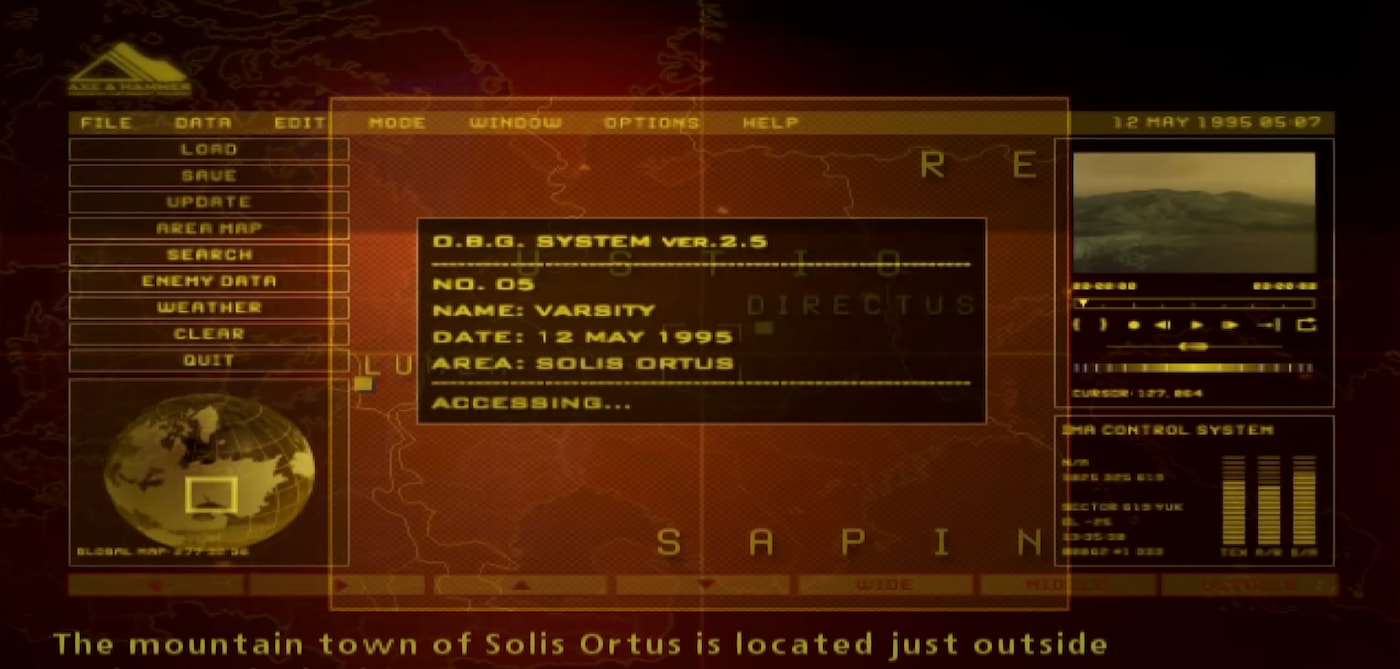
Ace Combat Zero. Another case where the animation is more impressive than the still. In dissecting this screen for recreation, I got even more impressed with the layers of detail in these old-school futuristic UIs. I wonder if they had a whole person or team building them.
In May, I played the much-discussed Blue Prince (2025, PC). (Almost no spoilers incoming, except vague notions of scope.) I have nothing meaningful to add to the conversation, other than to report my own utter admiration and delight, mixed with frustration over feeling compelled to tap out after about thirty hours. This frustration amplified because I wanted so dearly to solve the next few layers of the game—the puzzles and mysteries and world so exquisitely crafted—but the game got in its own way to such a degree that I finally stopped, having spent the final five hours of playtime banging my head against fruitless days.

Not from the game, but my own work after. As with Inscryption, the Blue Prince aesthetic was so inspiring it made me want to incorporate the blueprint theme into my own projects. I made some blueprint-y backing layers in Sketch to use for analyzing designs I like. Pictured here is just picking a good architect-y font to use in future analyses. (Draftsman is nice.)
And that’s all for now.
Until soon,
take care,
yours,
Max
P.S. Those well-versed in my website lore may recall a post about an early prototype of Weatherspread back from July of 2022. That was just a one-off Python script I’d run. The new Weatherspread is interactive, supports thousands of locations, incorporates data from NASA, has tourism stats and attraction info for most countries, is customizable, etc etc. What a ride!
P.P.S. In fact, the whole mailing list thing took so long I originally wrote this digest for May, and I’m now sending it late-June! Apologies if you spotted the original version on the website already.